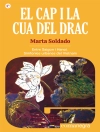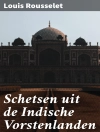In ‘Sketches of Persia, ‘ John Malcolm presents a deeply engaging narrative that combines travel writing, historical analysis, and cultural commentary. Drawing from his experiences during the early 19th century, Malcolm’s prose weaves vivid descriptions of Persian landscapes, customs, and society, reflecting a keen observance of the intricate fabric of Persian life. His literary style embodies the Romantic tradition, characterized by rich, evocative imagery and personal reflection, all within the broader context of Western fascination with the East during the period of colonial expansion and geopolitical interest. John Malcolm, a British soldier and diplomat, possessed a profound interest in Persian culture, which was catalyzed by his years in service in India and his subsequent mission to Persia. His encounters with Persian nobility and common folk alike afforded him unique insights into the shifting dynamics of power, tradition, and modernity within the region. Malcolm’s background not only informs his nuanced depictions of Persia but also resonates with the broader historical narrative of British imperialism in the 19th century. ‘Sketches of Persia’ is a must-read for anyone interested in travel literature, cultural studies, or the historical context of Western perceptions of the East. Malcolm’s eloquent prose and perceptive observations invite readers to explore a world at the crossroads of tradition and change, making it a timeless exploration of a rich cultural tapestry.
A propos de l’auteur
John Malcolm was a prominent figure in the early 19th century, known not only for his military and diplomatic services but also for his contributions to literature on Persia, or modern-day Iran. Though more widely recognized as a British soldier and statesman during the time of the British Empire, Malcolm’s literary pursuits cast a spotlight on his keen observations and insights into Persian society and culture. His work, ‘Sketches of Persia, ‘ published in 1827, is a compelling compilation of personal anecdotes and detailed descriptions of the geography, governance, and daily life in Persia, reflective of his experiences and encounters during his diplomatic missions. Malcolm’s writing is imbued with the intellectual spirit of his time, showcasing an orientalist perspective that was prevalent among European scholars and officials. Nevertheless, his narratives are invaluable for their contemporaneous account of Persia, offering scholars and historians a detailed view of the country during a period of significant change and interaction with Western powers. Malcolm’s literary style meshes the objective stance of a historian with the narrative flair of a storyteller, making his work both informative and engaging. ‘Sketches of Persia’ thus holds a significant place in the corpus of early Oriental studies and continues to be referenced by historians interested in the cross-cultural dynamics of the early 19th century.












